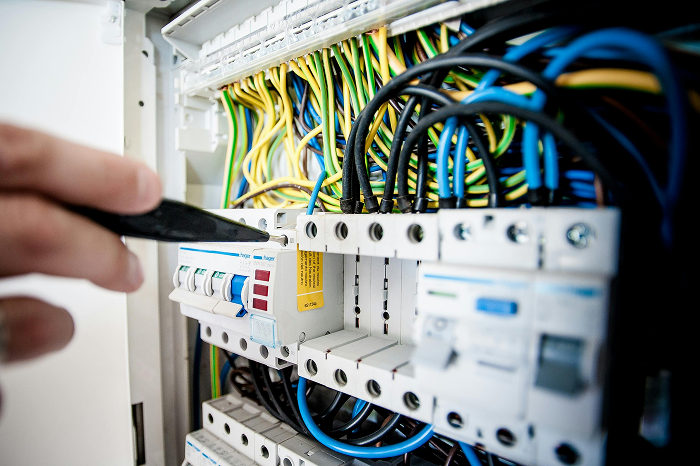Avoiding Overloaded Circuits: Ensuring Electrical Safety in Your Home
By Sabrina Merritt · Jul 25, 2025

In today's tech-savvy world, overloaded circuits have become a common issue in many households. Overloaded circuits occur when more electrical demand is placed on a circuit than it can handle, leading to various circuit issues that compromise electrical safety. Understanding the signs of an overloaded circuit, identifying potential problems, and implementing preventative measures can protect your home from electrical hazards. In this article, we'll explore the intricacies of overloaded circuits, common signs, and actionable steps you can take to ensure your home's electrical safety.
What is an Overloaded Circuit?
An overloaded circuit happens when the electrical demand on a circuit exceeds its capacity. This situation forces the circuit to work harder than it's designed to, causing it to overheat and potentially leading to fires or damage to electrical devices.
Key Factors Contributing to Overloaded Circuits
- High-Power Devices: Using multiple high-power appliances simultaneously.
- Outdated Wiring: Older homes with wiring that doesn't meet current power demands.
- Extension Cords: Over-reliance on extension cords to connect more devices than the outlets can handle.
- Faulty Electrical Panels: Panels that are not equipped to handle modern electrical loads.
Identifying Circuit Issues
Recognizing the warning signs of overloaded circuits is essential to prevent potential hazards. Here are some common indicators:
Common Signs of Overloaded Circuits
- Frequent Tripping of Circuit Breakers: A breaker that trips frequently typically indicates an overloaded circuit.
- Dimming Lights: Lights dimming when appliances are turned on signal that the circuit is maxed out.
- Burning Smell or Warm Outlets: A burning smell or warm outlets suggest overheating, a hallmark of circuit overload.
- Buzzing Noises: Hearing buzzing sounds from outlets or switches can indicate electrical stress.
Ensuring Electrical Safety at Home
Ensuring electrical safety involves both preventive measures and addressing existing issues. Here are some practical steps:
Preventative Measures
- Distribute Electrical Load: Spread devices across multiple circuits to balance the load.
- Upgrade Electrical Panel: Consider upgrading to a panel that can handle higher electrical demands.
- Use Proper Wiring: Ensure your home has wiring that meets current standards and power needs.
- Avoid Daisy Chaining: Do not connect multiple extension cords or power strips in series.
Addressing Existing Issues
- Inspect Electrical System: Regular inspections by a licensed electrician can identify potential problems early.
- Replace Damaged Components: Immediately replace any damaged outlets, switches, or wiring.
- Use Energy-Efficient Devices: Lower the overall load by switching to energy-efficient appliances and lighting.
Understanding Your Electrical System
Key Components of Home Electrical Systems
- Service Panel: The central hub that distributes electricity to various circuits.
- Circuits: Pathways that deliver electricity to different parts of the home.
- Outlets and Switches: Points where electrical devices connect to the circuit.
- Wiring: Conductors that carry electrical current from the panel to outlets and switches.
Upgrading to Modern Standards
Older homes may not have the capacity to handle today's electrical load. Upgrading your system involves:
- Professional Evaluation: Have a licensed electrician assess your needs and current system capabilities.
- Panel Upgrade: Install a higher-capacity panel if necessary.
- Dedicated Circuits: Add dedicated circuits for high-power appliances to prevent overload.
Electrical Safety Best Practices
It's crucial to follow best practices for electrical safety to minimize risks of overloaded circuits.
Safety Tips
- Regular Maintenance: Periodically check your electrical system for wear and tear.
- Proper Load Distribution: Avoid putting too many high-power appliances on a single circuit.
- Avoid Overuse of Extension Cords: Use outlets directly rather than relying on extension cords and power strips.
Safety Equipment
- Circuit Breakers and Fuses: Ensure they are the correct type and rating for your circuits.
- Ground Fault Circuit Interrupters (GFCIs): Especially important for bathrooms, kitchens, and outdoor outlets to prevent shock.
- Arc Fault Circuit Interrupters (AFCIs): Important for preventing fires stemming from arc faults.
When to Call a Professional
While many minor electrical issues can be handled DIY, there are times when professional help is crucial:
Signs Indicating the Need for Professional Help
- Persistent Electrical Problems: Frequent tripping of circuit breakers or continuous dimming of lights.
- Visible Damage: Scorched outlets, exposed wires, and other visible signs of damage.
- Major Electrical Projects: Installing new circuits or upgrading the service panel requires professional expertise.
Conclusion
Understanding and addressing overloaded circuits is key to maintaining electrical safety and preventing circuit issues in your home. Regular maintenance, proper load distribution, and timely upgrades are vital steps to ensure your electrical system is efficient and safe.
For complex electrical jobs and professional advice, consider using HouzTask to find reliable, certified electricians. HouzTask offers an easy way to ask questions and locate the right professionals for your needs.
Need help?
Let HouzTask help you diagnose the issue or connect with a trusted local pro — in minutes.
Get Started with HouzTask